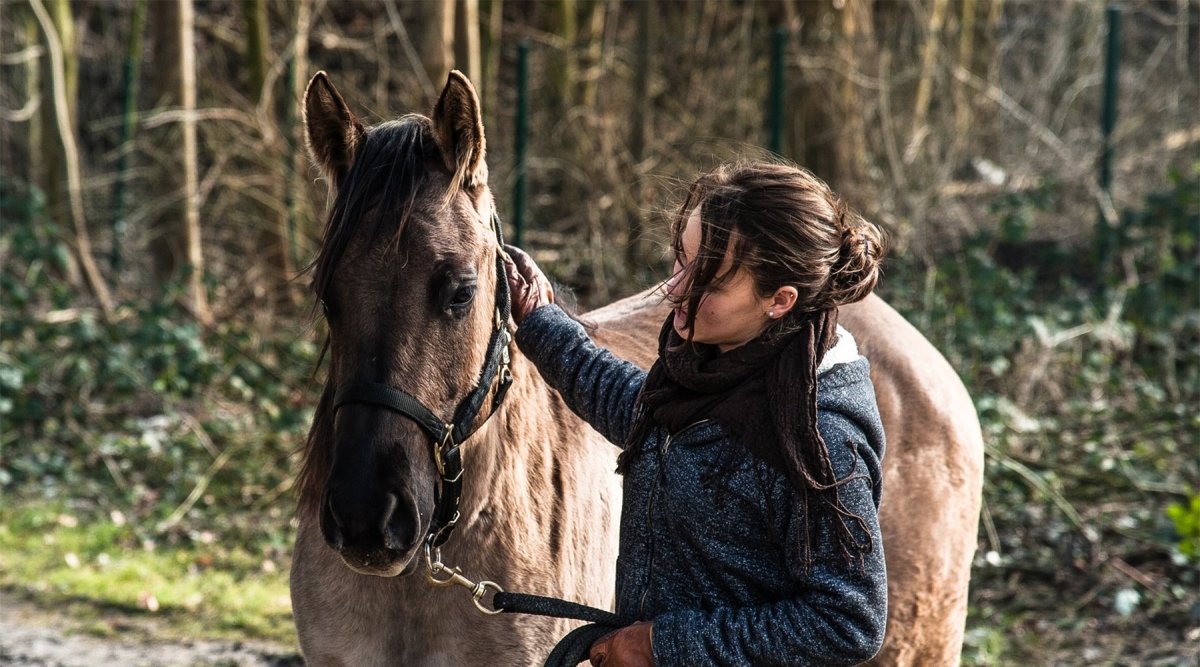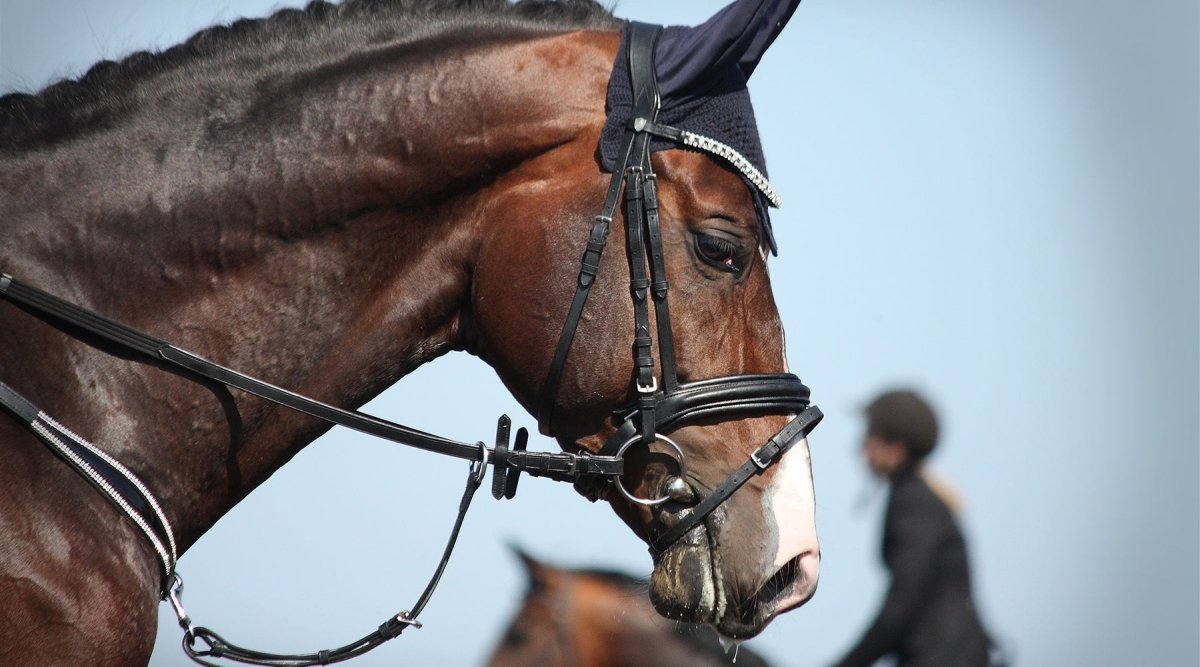Grazing is one of the horse's basic needs, even if many horse owners prefer to keep their animals in a box or stable. If you want to let your horse graze on fresh spring pasture again after a winter in the stable, we recommend a careful transition. Taking your horse out of the box and straight onto the pasture can quickly backfire.
Why do you have to graze your horse?
Only a few horses get to enjoy winter grazing in winter. Therefore, the horses' main diet over the winter consists of hay and/or haylage and concentrated feed. Many animals are also fed mineral-rich supplements. As a result, a large number of cellulose-decomposing bacteria have grown in the animal's stomach and intestines, which are also important for breaking down the winter feed.
Pasture grass in spring, on the other hand, is low in nutrients but rich in feed proteins and carbohydrates, the dreaded fructans for horse owners. The horse's intestinal flora must therefore slowly adapt to the change in feed and the bacteria for decomposing pasture grass must develop slowly. If the grazing period for horses begins too quickly and for too long, the animal's gastrointestinal tract cannot keep up with the processing of the protein- and carbohydrate-rich grass. This can lead to a dangerous excess of protein and sugar. If excess amounts are not properly broken down in the digestive tract, this results in the release of toxins.
In particular, horses with health problems such as obesity, metabolic diseases such as PSSM, EMS, Cushing's and horses susceptible to laminitis should be grazed even more slowly. Sometimes it is even recommended to stop grazing altogether.
Consequences of grazing too quickly:
- Digestive problems
- Life-threatening colic due to incorrect fermentation and gas formation
- Diarrhea and watery stool to cleanse the intestines
- Increased risk of laminitis due to an excess of fructans and poorly digestible starch (grain)
- Uncontrollable metabolic derailments
- Runny legs due to increased bacterial death and excess toxins in the body
Horses can react very differently to the change in feed. Fit and healthy animals cope much better with the change from box to paddock than animals with health problems. They react less sensitively to the increase in fructans, proteins and plant substances in the body.
Choose the right time for grazing
The right time to graze your horse is usually between March and May. It depends largely on the length and coldness of the winter. When nature returns from hibernation and the meadows and pastures fill with green, you can start grazing your horses. After a winter in the stables, however, this should be done with particular care and a few points must be taken into account so that grazing does not have any health consequences for the animal.
The most important points when grazing horses
- Accustom horses to the pasture carefully
- Never let them graze all day straight away
- Do not graze in weather that is too sunny or too cold
- Make sure that the grass is not too short, a length of 20 cm or more is ideal
- Do not graze on mown pasture
- Preferably only graze in the afternoon, especially after frosty and icy nights
- Feed with hay before grazing
- Do not worm the horse during the grazing period - double the metabolic load
- Avoid concentrated feed during the grazing period
- Ensure sufficient water supply in the pasture
- Grazing horses with health problems: even more carefully and slowly
- Orient grazing towards the weakest animal
Even when changing pasture within the season, it is advisable to graze the horse in a structured and slow manner, as the flora and fauna can vary depending on the area. This change can upset the stomach of sensitive horses.
How long should a horse be grazed? - The optimum schedule
To ensure that the changeover to grazing takes place without any unpleasant surprises, you should draw up a timetable. The weather conditions must be taken into account, as the fructan levels in the grass fluctuate depending on the time of day and season.
Sunny weather favors the fructan content in the grass, as do frosty nights. Grasses that are still growing generally contain more fructan than fully grown blades of grass. Grass that has to suppress growth due to frost, heat or lack of water also stores the energy it produces in the form of fructan. The type of grass also plays a role: some grasses are rich in fructan, others are poor.
The following conditions therefore apply to the fructan content in the plant:
Cold nights (below 10°C) and/or frost -> fructan content high
➔ Let the horse graze in the afternoon
Warm nights -> fructan content low
➔ Preferably graze in the morning
Warm weather with overcast skies -> fructan content medium to low
➔ Graze in the morning or afternoon
Grazed pastures, freshly mown meadows and stressed grass should also be avoided for grazing. Stress causes the plant to produce more energy and store it in the form of fructan.
The grazing period for horses can therefore last at least 14 days to 4 weeks. On the first day, the animal should not graze for longer than 15-20 minutes. Sick and weakened animals should graze for a shorter time. It is also advisable to let animals with health problems graze on a lead for a few minutes at first.
Over the next few days, your horse's grazing can be increased in 10-15 minute increments. This will allow your horse to graze for 1-1.5 hours a day over the course of a week. If your darling tolerates this change without any problems, you can switch to 30-minute increments in the second week, so that your horse will soon be able to graze in the mornings and afternoons without any problems.
If you notice during the changeover that your horse is not feeling well or is showing signs of digestive problems, skip one or two days on the pasture. The gastrointestinal problems should then have subsided.
The right feed when grazing - don't undernourish your horse
Hay should always be fed before grazing. Then the horse's stomach is well filled and it won't greedily pounce on the juicy green. Feeding small amounts of fresh grass shortly before grazing also supports gastrointestinal activity and gets the animal used to the young grass.
For horses that generally react sensitively to changes in feed, we recommend an additional feed supplement with nutrients that are gentle on the stomach. Hay cobs with stomach-supporting additives strengthen the stomach lining and help with temporary stomach problems. In addition, psyllium husks can be soaked and mixed into the feed before grazing. Due to their high swelling and water-binding capacity, they reduce the feeling of hunger and promote intestinal activity. If you want to support the development of intestinal bacteria in your horse, an all-round supply of yeast cultures and prebiotic nutrients is a good idea. Brewer's yeast and Jerusalem artichoke in particular have proven their worth when feeding horses with sensitive stomachs.



